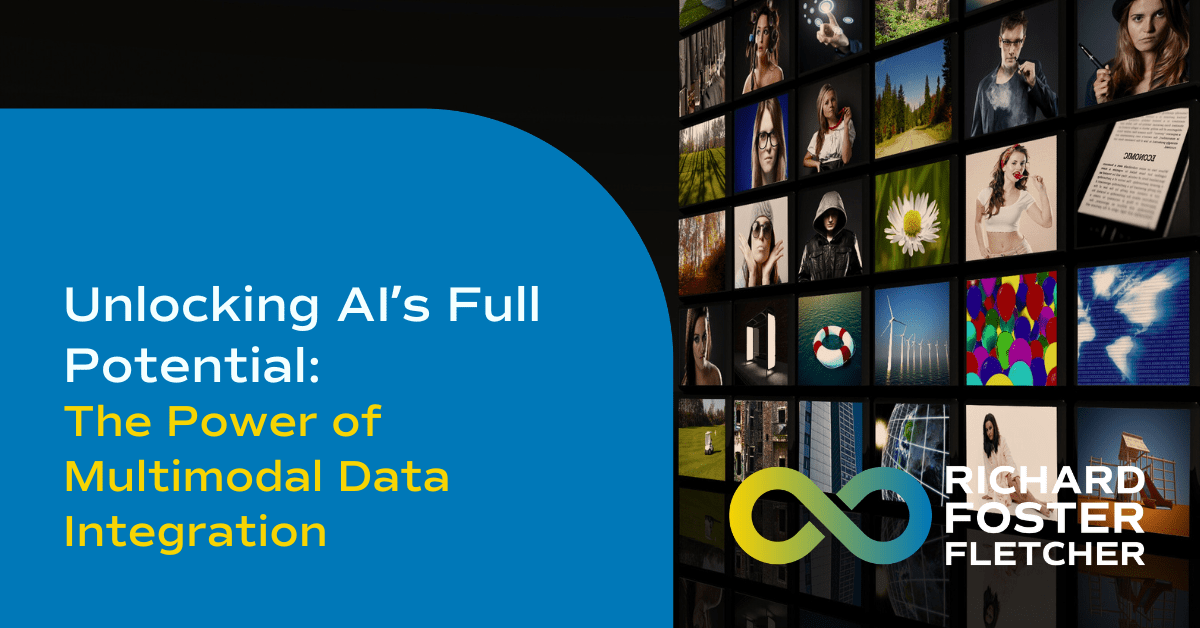
Unlocking AI’s Full Potential: The Power of Multimodal Data Integration

he integration of multimodal data—incorporating text, images, audio, and video—is essential for developing more robust and versatile AI models. While the potential of multimodal AI is immense, the journey towards its full realisation is fraught with challenges that need to be meticulously addressed.
The Problem: Data Scarcity and Monomodality
Traditional AI systems have primarily relied on text-based data, limiting their ability to understand and process the diverse range of human experiences. This reliance on a single modality restricts the contextual depth and accuracy of AI models, making it difficult for them to handle complex, real-world tasks that require multimodal comprehension. This limitation has spurred the need for incorporating diverse data types to create more comprehensive AI systems.
Current Developments in Multimodal AI
Several leading AI companies are already tackling the challenges of multimodal data integration. For instance, OpenAI’s GPT-4 integrates text, audio, and images, allowing users to interact with AI through multiple sensory inputs, thereby making interactions more natural and efficient. Similarly, Google’s Gemini models support multimodal prompt requests, processing diverse data types such as text, audio, and video to provide richer contextual understanding and more accurate outputs. Meta’s Multimodal AI integrates text and images to produce various forms of output, enhancing applications across productivity, healthcare, creativity, and automation.
These advancements represent significant steps forward, yet the journey is far from complete. The integration of multimodal data poses several challenges that need to be overcome to fully realise the benefits of this approach.
Challenges and Difficulties
One significant challenge in developing multimodal AI is the collection and annotation of diverse datasets. Existing datasets often fall short in covering all necessary modalities. For instance, video content requires detailed annotations such as timestamping events and contextualising actions, which is resource-intensive. The complexity of annotating multimodal data adds another layer of difficulty, requiring specialised expertise and substantial time investment.
Another challenge is the immense computational resources required. Training multimodal models demands extensive computational power and storage capacity. Companies like DeepMind and Microsoft, which develop models such as Flamingo and KOSMOS-1, invest heavily in infrastructure to support these needs. Smaller firms may struggle to match this level of resource allocation, limiting their ability to develop comparable models. The high cost of computational resources can be a barrier to entry for many organisations, making it challenging to compete in the multimodal AI space.
Additionally, integrating different data types into a single model involves sophisticated data fusion techniques. This process can introduce performance issues and requires careful optimisation to ensure that the model can handle multiple modalities effectively. The integration process must be meticulously managed to avoid potential pitfalls such as data misalignment and inconsistent interpretation across modalities.
Furthermore, developing standardised benchmarks and evaluation metrics for multimodal AI systems is challenging. Metrics must account for the interactions between different modalities, and creating comprehensive evaluation frameworks remains an ongoing area of research. Without reliable evaluation metrics, it is difficult to measure the true performance and effectiveness of multimodal AI models.
Overcoming Challenges
To address these challenges, collaborative data initiatives are essential. Partnerships between AI developers, researchers, and data providers can facilitate the creation of richer multimodal datasets. Collaborative efforts can pool resources and expertise, enhancing the quality and diversity of available data. By working together, organisations can overcome the barriers associated with data collection and annotation.
Employing advanced training techniques is also crucial. Utilising advanced neural networks and data fusion techniques can improve the integration of diverse data types. Techniques such as transformers and attention mechanisms are pivotal in enabling models to process and generate outputs across multiple modalities. Continuous research and development in these areas are essential to refine and optimise multimodal AI models.
Ethical considerations are paramount in the collection and use of multimodal data. Ensuring proper consent, protecting privacy, and mitigating biases are critical steps to maintaining trust and fairness in AI systems. Ethical data practices not only enhance the credibility of AI models but also ensure compliance with regulatory standards.
Benefits to Users and Businesses
The benefits of multimodal AI to users and businesses are substantial. Enhanced user interaction is one significant advantage. Multimodal AI enables more natural and intuitive interactions with technology. For example, virtual assistants that understand both voice commands and visual cues can provide more accurate and relevant responses, improving user experience. This capability can revolutionise customer service, making interactions more seamless and efficient.
Improved decision-making is another critical benefit. Businesses can leverage multimodal AI to gain deeper insights from diverse data sources. In healthcare, for instance, integrating medical images with patient records can lead to more accurate diagnoses and better treatment plans. Multimodal AI can transform industries by providing comprehensive solutions that consider multiple data perspectives.
Additionally, the ability to process and understand multiple data types opens up new possibilities for AI applications across various industries. From autonomous driving to augmented reality, multimodal AI can drive innovation and efficiency. Companies that adopt multimodal AI can stay ahead of the curve, gaining a competitive edge in the market.
Specific Ethical Challenges
Despite the benefits, multimodal AI presents specific ethical challenges. Bias and fairness are significant concerns. Multimodal data can exacerbate existing biases if not carefully managed. For instance, facial recognition systems may exhibit racial bias if trained on non-representative image datasets. Addressing these biases requires diverse and representative data, alongside rigorous bias mitigation strategies. Ensuring fairness in AI models is crucial to prevent discrimination and promote equality.
Privacy concerns also arise with the integration of audio and video data. Ensuring that data collection and usage comply with privacy regulations is essential. Companies must implement robust data protection measures to safeguard user information. Transparency in data usage policies and obtaining informed consent are vital to maintaining user trust.
Furthermore, transparency and accountability are critical in multimodal AI systems. These systems can be complex and opaque, making it difficult to understand how decisions are made. Enhancing transparency through explainable AI techniques and maintaining accountability for AI outcomes is crucial. Providing clear explanations for AI decisions can help users trust and adopt these technologies.
Leveraging multimodal data is essential for advancing AI capabilities, making models more contextually aware and versatile. While the integration of diverse data types presents significant challenges, the potential benefits for users and businesses are immense. By addressing these challenges through collaborative efforts, advanced techniques, and ethical practices, the AI community can develop systems that are not only smarter but also fairer and more trustworthy. The journey towards fully realising the potential of multimodal AI is complex, but the rewards in terms of enhanced interaction, improved decision-making, and increased innovation make it a path worth pursuing.
















